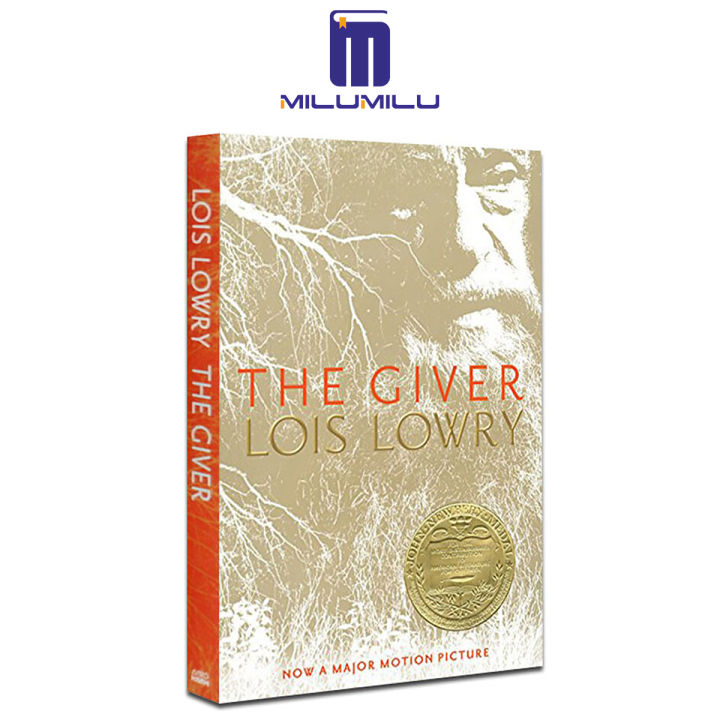The Worlds of Lois Lowry: Exploring the Enduring Legacy of a Literary Icon

Lois Lowry, a name synonymous with captivating young adult literature, has woven intricate narratives that explore profound themes of societal structures, individual identity, and the power of memory. Her impact extends far beyond the pages of her books, resonating with readers across generations and influencing the landscape of contemporary literature. This exploration delves into the expansive world of Lois Lowry’s works, examining her genres, writing style, inspirations, and the enduring cultural impact of her acclaimed novels.
Lois Lowry’s Literary Landscape: Genres and Themes

Lois Lowry’s body of work showcases a remarkable versatility, traversing various genres while consistently tackling complex and thought-provoking themes. While best known for her young adult fiction, her exploration of dystopian societies, historical fiction, and realistic narratives for children demonstrates a broad range of capabilities and a deep understanding of the human condition.
Dystopian Visions: The Giver Quartet and Beyond
Lowry’s most celebrated achievement lies within the realm of dystopian fiction, primarily with The Giver quartet. This series, comprising The Giver, Gathering Blue, Messenger, and Son, presents a compelling exploration of utopian societies gone awry. The Giver, the seminal work of the quartet, introduces a seemingly idyllic community where emotions and individual expression are suppressed for the sake of societal harmony. This seemingly perfect world hides a dark underbelly, exposing the devastating consequences of sacrificing individuality for the illusion of peace. The subsequent novels in the quartet further explore the complexities of this flawed utopia, revealing interconnected narratives and the enduring legacy of its characters.

The power of The Giver lies not only in its captivating plot but also in its ability to provoke critical thought about the nature of human experience, memory, and societal control. It is a story that continues to resonate with readers, particularly young adults, prompting reflections on the value of individual expression and the importance of confronting difficult truths. The series’ enduring appeal stems from Lowry’s ability to present complex ideas in an accessible and engaging way, making it suitable for a broad range of ages and reading levels. The exploration of such challenging subjects within a young adult context has undeniably broadened the scope of discussions around censorship, conformity, and emotional autonomy within families and educational settings.

Historical Fiction: Number the Stars and Beyond
Lois Lowry’s talents extend beyond the speculative realm of dystopian fiction, as demonstrated in her evocative historical novels. Number the Stars, a Newbery Medal-winning novel, transports readers to Nazi-occupied Denmark during World War II. This gripping tale, told from the perspective of a young girl, showcases courage, resilience, and the fight against oppression. Through her vivid storytelling, Lowry brings history to life, making the past accessible and relatable to young readers.
The emotional depth and historical accuracy of Number the Stars are remarkable. Lowry meticulously researches her historical settings, ensuring that her narratives accurately reflect the challenges and complexities of the time period. The book not only entertains but also educates, providing readers with valuable insights into a significant historical event while humanizing the experiences of those who lived through it. This approach to historical fiction showcases Lowry’s commitment to both compelling storytelling and factual accuracy, creating immersive narratives that resonate with readers of all ages.
Realistic Fiction: Anastasia Krupnik and Other Works
Lowry’s literary contributions also extend to the realm of realistic fiction for children and young adults. The Anastasia Krupnik series, a humorous and heartfelt collection of novels, follows the everyday experiences of a young girl as she navigates family life, friendships, and the complexities of growing up. These relatable narratives, characterized by wit and genuine emotion, showcase Lowry’s talent for portraying the nuances of childhood.
The Anastasia Krupnik series provides a comforting and familiar depiction of childhood, engaging readers with witty observations and realistic portrayals of family dynamics. Lowry’s ability to capture the unique voice and perspective of a young protagonist, along with her insightful exploration of universal themes, have made these books enduring classics. Her attention to detail in capturing the everyday occurrences and emotional landscapes of childhood sets her apart, creating narratives that feel genuine and deeply relatable. Through these books, she captures the joys and challenges of childhood in a way that is both heartwarming and profoundly insightful.
Lois Lowry: The Author Behind the Words
Understanding the author’s background, writing style, and inspirations provides crucial context to the profound impact of Lois Lowry’s books.
A Life of Inspiration: Lois Lowry’s Biography and Influences
Lois Lowry’s life experiences have undoubtedly shaped her writing. Born in Hawaii and raised across various locations including New York, Pennsylvania, and Japan, she has drawn upon her diverse experiences to create rich and varied settings for her stories. Her background in journalism and her passion for photography have also had a significant impact on her writing style. Her keen observations, attention to detail, and ability to capture evocative imagery are hallmarks of her storytelling.
Lowry’s choice of subjects has been influenced by numerous factors, including current events and personal experiences. Her deep interest in the nature of memory and its impact on the human condition is evident throughout her work. Similarly, the challenges faced by individuals and societies throughout history have inspired many of her plots. Her commitment to social justice and her desire to promote critical thinking are deeply interwoven into her narratives.
A Distinct Style: Lois Lowry’s Writing Techniques
Lois Lowry’s writing style is characterized by a unique blend of simplicity and depth. Her prose is generally accessible, particularly for young adult readers. However, beneath the surface of simplicity lies a complex exploration of themes and ideas. Her use of imagery and evocative language creates a vivid and engaging reading experience. Furthermore, her narrative structures, whether chronological or non-linear, enhance the storytelling and emotional impact.
One of Lowry’s significant skills is her ability to create compelling characters. Her protagonists, even in her more adult-oriented works, are often children or young adults, allowing readers to identify with their vulnerability and struggles. Her character development showcases her empathetic understanding of the human condition, providing readers with insight into the inner lives of her characters. This empathetic approach enhances the reader’s connection to her narratives.
The Sources of Inspiration: Lois Lowry’s Creative Process
Lowry’s creative process is characterized by careful research, detailed planning, and an emotional investment in her characters. She meticulously researches the historical contexts of her historical fiction, and carefully constructs the societies she creates in her dystopian novels. Her writing process allows her to explore a wide range of themes, developing plots that consistently deliver both intellectual and emotional resonance.
The emotional authenticity and depth of her narratives showcase Lowry’s thoughtful and deliberate approach to writing. She doesn’t shy away from challenging topics, ensuring that her stories promote critical thinking and self-reflection. Her creative process and attention to detail are reflected in the quality and complexity of her work.
The Enduring Impact of Lois Lowry’s Books
Lois Lowry’s literary influence stretches across several areas, shaping both literary trends and cultural conversations.
Literary Influence: Shaping the YA Dystopian Genre
Lowry’s impact on young adult literature is undeniable, particularly her contribution to the rise of the dystopian genre. The Giver, often cited as a seminal work in this genre, paved the way for numerous other novels exploring similar themes of societal control, individual identity, and the search for freedom. Many contemporary authors acknowledge her influence, indicating the enduring legacy of her work. Lowry’s ability to present complex philosophical ideas through the lens of young adult experience has not only shaped a genre but also influenced how young adult fiction engages with challenging social and political issues.
Adaptations and Interpretations: Bringing the Stories to Screen and Stage
Lowry’s novels have been successfully adapted to various media, including film and stage productions. These adaptations, while varying in their success, demonstrate the enduring appeal and adaptability of her stories. The inherent flexibility of Lowry’s narratives enables diverse interpretations of her works, each offering its own unique perspective on her original ideas. Such adaptations broaden the reach of her stories, enabling a wider audience to engage with her work.
Awards and Recognition: Acknowledging Literary Excellence
Lois Lowry has received numerous prestigious awards and accolades for her work, solidifying her status as a literary giant. Her Newbery Medals, awarded for both Number the Stars and The Giver, represent a significant achievement and recognition of her literary excellence. These awards, alongside other numerous accolades, underscore her significant contributions to children’s and young adult literature.
Communities and Connections: Building Reader Engagement
Lowry’s books have cultivated vibrant online communities among readers and educators, who share interpretations and engage in ongoing discussions of her novels. The accessibility of her work, coupled with its profound themes, has fostered reader engagement and created lasting connections. This ongoing dialogue showcases the power of Lowry’s narratives to spark lasting interest and critical thinking. Such communities also highlight the enduring impact of her work across different generations and cultural contexts.
In conclusion, Lois Lowry’s literary contributions transcend mere storytelling. Her works have sparked countless conversations, challenged assumptions, and inspired both readers and writers. Her ability to blend accessibility with profound insight, and her willingness to confront complex societal issues, make her a truly influential figure in children’s and young adult literature. The enduring legacy of Lois Lowry’s work is a testament to her remarkable talents and her profound impact on the literary and cultural landscape.